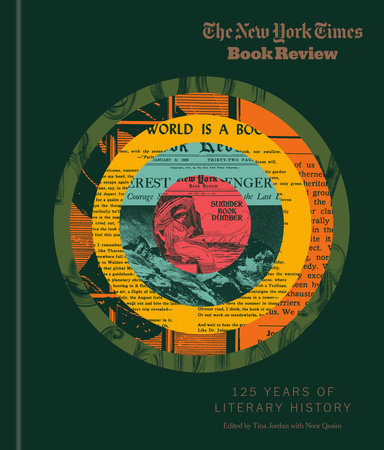A Review of the ReviewHalfway through
Lolita, Humbert Humbert—relaxed, triumphant and a mere pinch of pages away from his downfall—stops to extol the wonders of America. He has dragged his 12-year-old quarry on a road trip across the country, a perversion of a honeymoon. He slips into French to marvel at all they have seen. “
Nous connûmes,” he purrs, borrowing “a Flaubertian intonation”—
we came to know—and enumerates each guesthouse and motel, each unsmiling landlady.
Nous connûmes—we came to know. It has felt like the mood of the moment, with the reappraisal of monuments, real and metaphorical, in our midst—writers included. There have been fresh considerations of William Faulkner, Flannery O’Connor, David Foster Wallace and others, as their private papers and private lives have come to light.
Nous connûmes Nabokov himself; this past year brought forth a swarm of studies and, in March, an anthology dedicated to
Lolita alone. The morality of the novel, and of its creator, are litigated with hot urgency, as if Nabokov, dead some 40 years, lingers in the dock somewhere.
Not a surprising moment, then, to be asked to explore the archives of The New York Times Book Review on the occasion of its 125th anniversary, a moment for celebration but also for some more challenging introspection, a moment to examine the publication’s legacy in full. My brief, you could say, was to review the Book Review, to consider the coverage of “women, people of color, L.G.B.T.Q. writers” and changing mores in criticism. But what revelatory news could I possibly bring? The word “archive” derives from the ancient Greek arkheion, sometimes translated as “house of the ruler.” Who wanders there with any illusions?
What could those reviews contain? Some misjudgments, to be sure—masterpieces misunderstood in their time. A few preternaturally sensitive assessments. Fluorescent condescension and stereotype. Above all, the pleasant and dubious satisfactions of feeling superior to the past.
And yet. In recent years, The Times has faced scrutiny of the racial and gender imbalance in its reviews. One survey, which looked at nearly 750 books assessed by The Times in 2011, across all genres, found that nearly 90 percent of the authors assessed were white. But what about the reviews themselves: the language, the criteria? When “women, people of color, L.G.B.T.Q. writers” were reviewed, how was their work positioned? What patterns can we trace, what consequences? And what do we do with this knowledge—how can it be made useful? When we come to know, what do we really see?
To wander through 125 years of book reviews is to endure assault by adjective. All the
fatuous books, the
frequently brilliant, the
disappointing, the
essential. The adjectives one only ever encounters in a review
(indelible, risible), the archaic descriptors (
sumptuous). So many
masterpieces, so many duds—now enjoying quiet anonymity.
What did I find? Those misjudged masterpieces—on Dreiser’s
Sister Carrie: “It is a book one can very well get along without reading.” The sensitive assessments—consistently by the critic and former editor of the Book Review, John Leonard, an early and forceful champion of writers like Toni Morrison, John Edgar Wideman and Grace Paley. Fluorescent condescension and stereotype—on N. Scott Momaday’s
House Made of Dawn, which went on to win the 1969 Pulitzer Prize for fiction: “American Indians do not write novels and poetry as a rule or teach English in top-ranking universities either. But we cannot be patronizing.” Oh, no?
The inaugural issue of the Book Review was published in 1896. It featured 10 reviews, all unsigned, along with lists of new books and literary happenings. An essay in the form of an imaginary conversation poked fun at novelists’ stock phrases. On Laurence Sterne: “that ‘shorn lamb’ of his has been pulled hither and thither enough to be the toughest jerk mutton in the world.”
Since 1924, the Book Review has run bylines. Contributors are not, for the most part, professional critics (a vanishing breed) but what Ford Madox Ford called “artist-practitioners”—the moonlighting novelist or specialist. Curiously, many seem to speak in one voice throughout the years, with that signature, seignorial remove.
That tone isn’t merely a function of the rhythms of the short review; it flows from the house style. Reviewers almost never use “I,” long discouraged by the paper, but the magisterial “we.” What flaws did “we” discover in this slight but promising novel? Why do “we” go to fiction? (This last example from my—our?—own work.)
“We” can be a coercive little word. A forced embrace, a leash. It’s Humbert’s pronoun—
“nous”— his way of speaking for Lolita. It presumes consensus; it presumes that “we” are the same. Margo Jefferson, a former book critic at The Times, has spoken about the peculiarity of the convention. “‘We’ meant that our readers were our students and our followers,” she said. “It implied we were omniscient narrators, leading them toward the best, the wisest, the most educated conclusions.”
How unselfconsciously, how
affectionately, that notion of consensus was once assumed—and inscribed. How specifically the reader of the Book Review was imagined and catered to. In a summer reading column in 1915, the Book Review recommended titles for the “intellectual enjoyment that appeals to ‘the tired business man’ on holiday.”
As I reached midcentury in the archives, I kept bumping into one particular reviewer with a plump, paternalistic style and the Dickensian name of Marshall Sprague.
Sprague! I’d innocently turn a corner and find you back at it, comparing a woman writer to a trout—
as praise.
His own best-known book—a study of the frontier (what else?)—was titled
A Gallery of Dudes, a fair description of these pages at the time.
(A moment to appreciate the obituary of Francis Whiting Halsey, the Book Review’s first editor, whose death in 1919 was presented as a sort of apotheosis of literary masculinity: “Overwork on a 10-volume history of the European War contributed to his last illness.”) It was a clubby world put into a panic by the success of “the lit’ry lady,” as a 1907 article termed her. Early issues of the Book Review were lively with alarm. Why Are Women Using Male Pseudonyms? How Dare Women Write From the Point of View of Male Characters? Why Are Women’s Books Selling So Well?
“Is Woman Crowding Out Man From the Field of Fiction?” The suave “we” would not yet accommodate women, or others, and the reviewer acted as sentry, patrolling the pronoun’s borders. For years the novelist Anthony Burgess, chief fiction reviewer of
The Observer in London, was said to decide which women would be permitted to leave the “ghetto” of female writing. The longtime Times staff critic Orville Prescott enjoyed prerogatives of his own. (The paper’s staff critics, of which I am now one, operate independently of the weekly Book Review.) In 1948, Prescott dismissed Gore Vidal’s novel
The City and the Pillar as “pornography”—an odd claim given the lack of sex in the book. I suspect that what Prescott really found so objectionable was the absence of shame in a love story between two men. Meanwhile, in the Book Review, C.V. Terry took a different view, but no less ugly: “A novel as sterile as its protagonist.” Vidal and his publishers claimed that the Book Review refused to run paid advertisements and had him blacklisted for years.
Truman Capote’s Southern Gothic
Other Voices, Other Rooms was published that same month, and featured that famous author photograph: young Capote, lovely and sulky, splayed across the back jacket, making the kind of eye contact that can still make you flush, some 70 years on. Carlos Baker’s review was an extended shudder. “The story,” he wrote, “did not need to be told, except to get it out of the author’s system.”
Note that language. It reappears in the reviews of the interlopers—the nonwhite writers, women writers and especially L.G.B.T.Q. writers. Their books are not written, they are not crafted—they are expelled, they are excreted, almost involuntarily. James Purdy’s work—his “homosexual fiction” (this from a Wilfrid Sheed review)—represented “the sick outpouring of a confused, adolescent, distraught mind” (that from Prescott). Katherine Anne Porter’s work received a clinical and distressing diagnosis: “The pellucid trickle has lately clouded.” The charge can be twisted into a form of perverse praise, as if writing were a sort of bodily instinct. In a review of
Dust Tracks on a Road, John Chamberlain wrote that the “saucy, defiant” Zora Neale Hurston was “born with a tongue in her head, and she has never failed to use it.”
Copyright © 2021 by Edited by Tina Jordan with Noor Qasim. All rights reserved. No part of this excerpt may be reproduced or reprinted without permission in writing from the publisher.









